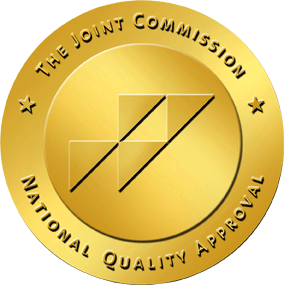Key Takeaways
- Klonopin (clonazepam) is a benzodiazepine that enhances GABA activity, helping manage anxiety and seizures but carrying risks of dependence.
- Alcohol acts as a central nervous system depressant, impairing coordination and judgment and potentially causing physical dependence.
- Mixing Klonopin and alcohol intensifies their sedative effects, significantly raising the risk of severe respiratory depression and overdose.
- Short-term dangers of combining these substances include extreme drowsiness, blackouts, memory loss and life-threatening breathing difficulties.
- Long-term misuse can lead to organ damage, increased addiction risk and worsened mental health issues.
- Safe, supervised withdrawal is crucial to manage dangerous symptoms that may arise when stopping both substances.
- Comprehensive treatment, involving detox, rehab, behavioral therapy and aftercare support, is essential for overcoming Klonopin and alcohol abuse.
Substance abuse involving prescription medications and alcohol is a growing concern, and one dangerous combination is Klonopin (clonazepam) mixed with alcohol. Klonopin is a benzodiazepine that is commonly prescribed for conditions such as anxiety and seizure disorders, while alcohol is a widely consumed substance with well-known depressive effects on the central nervous system (CNS). Mixing these two substances increases the likelihood of severe health consequences, from overdose to long-term organ damage.
In this article, we will explore what Klonopin is, how alcohol affects the body, the pharmacological interactions between the two, and the risks associated with mixing them. We will also discuss treatment approaches, from detoxification and rehabilitation to aftercare support, and highlight preventive measures to reduce the likelihood of abuse.
What Is Klonopin?
Klonopin, the brand name for clonazepam, is a prescription medication classified as a benzodiazepine. Benzodiazepines work primarily by enhancing the activity of gamma-aminobutyric acid (GABA), a neurotransmitter that helps calm nerve impulses in the brain. By increasing GABA’s inhibitory effect on the nervous system, Klonopin slows down excessive brain activity, which can reduce symptoms of anxiety, panic attacks and seizures.
Originally approved by the U.S. Food and Drug Administration (FDA) for the treatment of epilepsy and panic disorder, Klonopin has become one of the more frequently prescribed benzodiazepines due to its relatively rapid onset of action and its effectiveness in controlling seizures and reducing anxiety-related symptoms. Although many people benefit from short-term therapeutic use of Klonopin, the medication carries a significant potential for dependence, abuse and addiction. As with other benzodiazepines, individuals should use Klonopin only under close medical supervision.

It's time to get your life back.
If you are struggling with addiction and co-occurring mental health, our expert team is here to guide you every step of the way. Don’t wait— reach out today to take the first step toward taking control of your life.
Side Effects of Klonopin
While Klonopin can be beneficial for individuals who need help managing certain medical conditions, it can also cause a range of side effects. These side effects vary in severity depending on factors such as dosage, individual tolerance and the presence of co-occurring conditions or substance use. Common side effects of Klonopin include:
- Drowsiness and sedation: Klonopin’s mechanism of action involves enhancing GABA activity, which slows down communication between nerve cells in the brain, making a person feel tired or relaxed.
- Dizziness: Decreased CNS activity can affect a person’s sense of balance and coordination.
- Memory issues: Benzodiazepines can cause short-term memory problems, including difficulty forming new memories.
- Slowed reflexes: Klonopin can impair motor function and reaction time.
- Confusion or disorientation: Some individuals, especially the elderly, may experience increased confusion while taking benzodiazepines.
- Physical dependence: Long-term use can lead to physical dependence, meaning the body adapts to the substance and experiences withdrawal symptoms when the medication is reduced or stopped.
- Tolerance: Over time, higher doses may be needed to achieve the same therapeutic effects, increasing the risk of misuse.
It is important to note that these side effects can become more pronounced or dangerous when Klonopin is taken with other CNS depressants, most notably alcohol.
How Does Alcohol Affect the Body?
Alcohol (ethanol) is a psychoactive substance that can have profound effects on the human body. It is classified as a depressant because it slows the activity of the central nervous system. Upon consumption, alcohol is rapidly absorbed into the bloodstream, primarily through the stomach and small intestine, and transported throughout the body, including the brain. Once alcohol enters the brain, it disrupts the balance of neurotransmitters, including GABA and glutamate, among others.
Initially, many people experience relaxation, reduced inhibitions and a feeling of euphoria when drinking alcohol. However, with higher amounts, the depressant effects become more apparent, leading to slurred speech, impaired judgment, decreased coordination and, in severe cases, life-threatening respiratory depression.
Risks of Alcohol Abuse
While moderate alcohol use may not cause significant harm in certain healthy individuals, excessive or chronic alcohol use leads to numerous short- and long-term health risks:
- Liver damage: The liver metabolizes the majority of alcohol consumed. Over time, heavy alcohol use can contribute to inflammation and scarring (cirrhosis), which can be life-threatening.
- Cardiovascular issues: High alcohol intake raises the risk of high blood pressure, irregular heartbeat, stroke and cardiomyopathy (damage to the heart muscle).
- Neurological problems: Alcohol can cause neuropathy (nerve damage), memory impairment and various types of cognitive dysfunction.
- Mental health concerns: Chronic alcohol abuse is associated with depression, anxiety and other mental health disorders.
- Addiction: Chronic heavy alcohol consumption can lead to alcohol dependence and addiction, which may require professional treatment to overcome.
When alcohol is used in combination with other substances, such as benzodiazepines like Klonopin, the risks and potential for harm escalate significantly.
Pharmacological Effects of Klonopin and Alcohol
Klonopin and alcohol share a key pharmacological similarity: both depress the activity of the central nervous system by enhancing GABA or influencing related neurotransmitter pathways. When used alone and under safe conditions, each can produce sedation and relaxation. However, when taken together, the combined effects can amplify sedation, respiratory depression and cognitive impairments, increasing the risk of severe adverse events, including overdose.
How Does Klonopin Affect the Nervous System?
Klonopin’s main pharmacological action is to enhance the effect of GABA, which is the brain’s primary inhibitory neurotransmitter. GABA works to regulate nerve cell excitability, preventing neurons from firing excessively. With more GABA activity:
- Calming effects: Users may feel relief from anxiety, stress or tension.
- Sedation: Klonopin can cause marked drowsiness or sedation, which can help in seizure control or anxiety relief but also poses risks when motor coordination is necessary (e.g., driving).
- Muscle relaxation: Benzodiazepines often relax skeletal muscles, making them beneficial for certain seizure or anxiety-related conditions but potentially harmful when performing tasks requiring focus or physical coordination.
- Risk of dependence: Prolonged Klonopin use can alter the brain’s chemistry to the point where it relies on the medication’s presence to maintain “normal” functioning. Abruptly stopping the medication can lead to withdrawal symptoms such as tremors, anxiety, insomnia and, in some cases, severe seizures.
How Does Alcohol Affect the Nervous System?
Alcohol impacts various neurotransmitters, including GABA, glutamate and dopamine. Although the early stages of drinking can produce mild euphoria and decreased inhibition, these pleasurable effects are overshadowed by more harmful neurological impacts when someone engages in heavy or chronic use:
- Depressant effects: Alcohol slows brain function, causing delayed reaction times, slurred speech and compromised decision-making.
- Changes in neurotransmitters: Chronic alcohol exposure can lead to imbalances in GABA, increasing the risk for anxiety, depression and dependency when not drinking.
- Cognitive impairment: Heavy or long-term alcohol use can impair memory, concentration and overall cognitive function.
- Physical dependence: Like benzodiazepines, alcohol can lead to physical dependence, with withdrawal symptoms such as trembling, sweating, irritability, seizures and delirium tremens (DTs) if intake is abruptly stopped.
By sharing an effect on GABA, Klonopin and alcohol can interact in a potent way, compounding each other’s CNS depressant effects.
What Are the Risks of Taking Klonopin With Alcohol?
Taking Klonopin along with alcohol can increase the intensity and duration of both substances’ depressive actions on the central nervous system. These interactions lead to an array of potential health risks that span immediate, acute consequences and long-term adverse outcomes. People may mistakenly believe that combining a prescription medication with alcohol is relatively safe if the medication is “doctor-approved.” However, any healthcare professional will recommend strict avoidance of alcohol while on benzodiazepine therapy — or else the person risks serious, sometimes life-threatening, complications.
Immediate Health Risks of Mixing Klonopin and Alcohol
- Severe Sedation and Drowsiness: Klonopin alone may cause drowsiness, but when combined with alcohol, the sedative effect can become significantly more powerful. This can lead to extreme fatigue, difficulty staying awake and dangerously impaired judgment.
- Respiratory Depression: Both Klonopin and alcohol can slow breathing. In some instances, this effect can become severe, resulting in dangerously low oxygen levels or even respiratory failure.
- Reduced Coordination and Impaired Judgment: It is already risky to drive or operate heavy machinery under the influence of alcohol. Adding Klonopin heightens those risks, as the combined effects on coordination, motor skills and cognitive functioning can be profound. This state of impairment increases the likelihood of accidents and injuries.
- Potential Overdose: Overdosing on benzodiazepines alone can be life-threatening, especially when taken in large doses. However, the risk of a fatal overdose is considerably increased when Klonopin is mixed with alcohol because each substance intensifies the other’s depressant effects on the central nervous system.
- Blackouts and Memory Loss: Both alcohol and benzodiazepines can impair memory formation. When taken together, the risk of experiencing blackouts or periods of amnesia can increase, leading to gaps in one’s recollection of events and actions performed while intoxicated.
Long-Term Health Risks of Mixing Klonopin and Alcohol
- Heightened Risk of Addiction and Dependence: Regularly combining Klonopin and alcohol significantly raises the likelihood of addiction to one or both substances. Over time, tolerance builds, requiring higher doses to achieve the same effects, potentially spiraling into full-blown dependence.
- Organ Damage: Chronic alcohol abuse is well-known to cause liver damage, cardiovascular problems and neurological issues. Adding Klonopin into the mix can place extra strain on the liver and kidneys, as the body works harder to metabolize both substances. Organ damage may occur more quickly when multiple substances are abused simultaneously.
- Worsening Mental Health Conditions: While Klonopin is sometimes prescribed for anxiety or panic disorders, using it alongside alcohol can exacerbate underlying mental health issues. Alcohol can worsen depression and anxiety, while the misuse of Klonopin can contribute to cognitive issues. The result can be a negative feedback loop where each substance intensifies emotional and psychological struggles.
- Social and Interpersonal Consequences: Chronic substance abuse can deteriorate relationships, employment and overall quality of life. The long-term consequences of mixing Klonopin and alcohol often involve not just physical and mental harm but also social isolation and financial instability.
- Cumulative Toxicity: When the liver is processing multiple substances, toxic byproducts can accumulate. Over time, these byproducts may contribute to serious damage to the liver and other organs, raising the possibility of chronic illness and fatal complications.
Treatment Approaches for Klonopin and Alcohol Abuse
Overcoming a pattern of misuse involving Klonopin and alcohol can be challenging, but recovery is possible with the right professional help. Because of the complexity of dual dependence, treatment often involves a comprehensive approach that addresses the medical, psychological and social dimensions of addiction. Individuals seeking recovery should work closely with healthcare providers, addiction specialists and mental health professionals to develop an individualized treatment plan.
Klonopin and Alcohol Withdrawal Management
Medical detox is typically the first step in treating simultaneous Klonopin and alcohol abuse. Because both substances can produce severe and sometimes life-threatening withdrawal syndromes, detox should be conducted under medical supervision. During detox:
- Benzodiazepine tapering: If someone is physically dependent on Klonopin, abrupt cessation can trigger seizures and other acute withdrawal symptoms. A controlled taper allows the body to gradually adjust to lower levels of medication.
- Medication-assisted treatment (MAT): In some cases, healthcare professionals may use other medications to manage alcohol withdrawal symptoms or to reduce cravings. Medications such as naltrexone, acamprosate or disulfiram might be considered.
- Monitoring vital signs: Healthcare teams will closely watch heart rate, blood pressure, temperature and respiratory function to ensure any concerning changes are quickly addressed.
- Symptom management: Detox teams help alleviate painful or uncomfortable symptoms like anxiety, tremors and nausea, ensuring the process is as safe and comfortable as possible.
Alcohol and Klonopin Rehab
After completing detox, many individuals step down into an inpatient or outpatient rehabilitation program, depending on factors like the severity of their addiction, co-occurring mental health disorders, home environment and level of social support. These programs help patients:
- Develop coping strategies: Individuals learn healthier ways to handle stress, anxiety and cravings without resorting to substances.
- Build structured routines: Rehab programs often focus on implementing daily schedules that encourage productive habits, including self-care and emotional regulation.
- Address emotional and psychological challenges: Addiction often has underlying causes, such as unresolved trauma or unmanaged mental health issues. Rehab therapy sessions help uncover and address these factors.
- Maintain accountability: Group therapy and peer support encourage individuals to stay committed to sobriety.
Behavioral Therapy
Behavioral therapies play a crucial role in long-term recovery and relapse prevention. Common approaches include:
- Cognitive Behavioral Therapy (CBT): Helps individuals identify negative thought patterns and develop healthier thinking strategies, reducing the risk of relapse.
- Dialectical Behavior Therapy (DBT): Focuses on emotional regulation and distress tolerance skills. DBT is especially useful for people with intense emotional reactions and self-harm urges.
- Motivational Interviewing (MI): Encourages clients to clarify personal goals and resolve ambivalence around making changes, boosting motivation for sobriety.
- Family therapy: Engages family members in the treatment process, helping rebuild trust, improve communication and foster a supportive home environment conducive to sobriety.
Aftercare and Support
Recovery does not end once a formal treatment program is completed. Aftercare is a critical component of maintaining a drug- and alcohol-free lifestyle. Aftercare often includes:
- Ongoing therapy: Continued individual or group therapy sessions to keep addressing triggers, stress and underlying mental health issues.
- Support groups: Mutual support meetings such as Alcoholics Anonymous (AA), Narcotics Anonymous (NA) or SMART Recovery provide a network of peers who share similar experiences.
- Sober living arrangements: Some individuals choose to transition to sober living homes, which offer structured environments that support abstinence while promoting independence.
- Regular check-ins with healthcare providers: Monitoring physical and mental health is vital, especially if medication management is needed for anxiety, depression or other conditions.
Preventing Alcohol and Klonopin Abuse
Prevention efforts can reduce the likelihood of substance misuse and the potentially dangerous consequences of combining Klonopin and alcohol. Key preventive measures include:
Medical Guidance and Education
- Follow Prescription Guidelines: Only take Klonopin as prescribed, never increasing or altering dosage without physician approval.
- Ask Questions: Patients should understand the potential side effects and interactions associated with Klonopin, including the explicit instruction to avoid alcohol.
Responsible Alcohol Use
- Know Your Limits: Understand and respect standard drink guidelines and avoid binge drinking.
- Seek Help Early: If noticing increased reliance on alcohol to cope with stress or anxiety, consider talking to a mental health professional or attending a support group.
Screening and Monitoring
- Physician Awareness: Healthcare providers should screen for alcohol use and potential substance abuse before prescribing benzodiazepines.
- Open Communication: Individuals should be honest with medical professionals regarding their alcohol consumption or recreational drug use.
Community and Workplace Programs
- Educational Campaigns: Outreach programs can raise awareness of the risks associated with mixing prescription drugs and alcohol.
- Employee Assistance Programs (EAPs): Workplaces often offer confidential counseling and referral services for employees struggling with substance use.
Address Co-Occurring Disorders
- Integrated Treatment: Those with anxiety, depression, trauma or other mental health issues benefit from integrated treatment approaches. By effectively managing mental health conditions, the motivation to self-medicate with substances can decrease.
Get Help for Benzo or Alcohol Addiction in Georgia
Mixing Klonopin and alcohol poses significant risks to physical health, mental well-being and overall life stability. Both substances depress the central nervous system and intensify each other’s effects, making the combination especially dangerous. From severe sedation and respiratory depression to a heightened risk of overdose, the acute dangers are substantial. Long-term misuse can lead to organ damage, addiction and devastating social consequences.
However, recovery is possible. Through comprehensive medical detox, structured rehabilitation programs, evidence-based behavioral therapies and robust aftercare support, individuals struggling with Klonopin and alcohol abuse can reclaim their health and restore balance to their lives. The Recovery Village Atlanta specializes in providing holistic, individualized care that addresses the root causes of addiction and paves the way for sustainable, long-term recovery.
If you or a loved one is experiencing challenges with alcohol and Klonopin misuse, seeking professional help is an essential first step. Whether through residential rehabilitation, partial hospitalization programming, or support groups, the right intervention can offer hope, healing and a renewed sense of purpose. With the combination of medical oversight, therapeutic guidance and community support, it is possible to break free from the cycle of substance abuse and move toward a healthier, substance-free life. Give us a call today for a free and confidential consultation.









